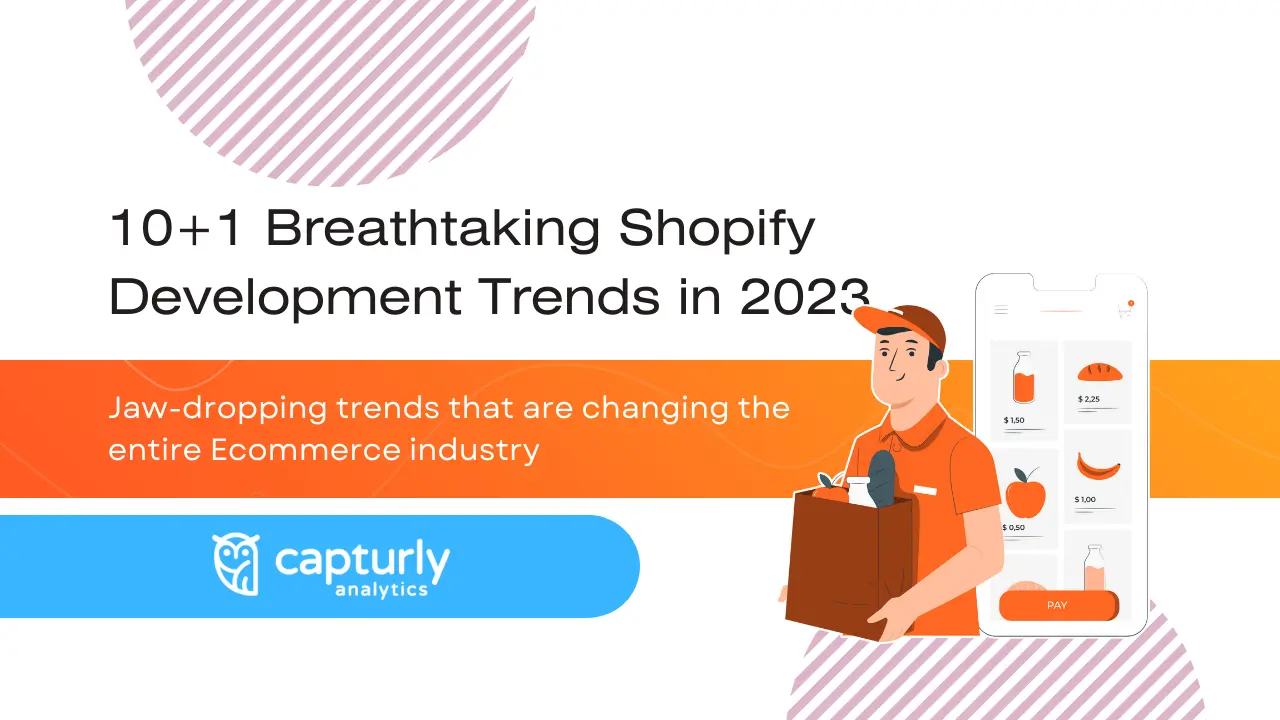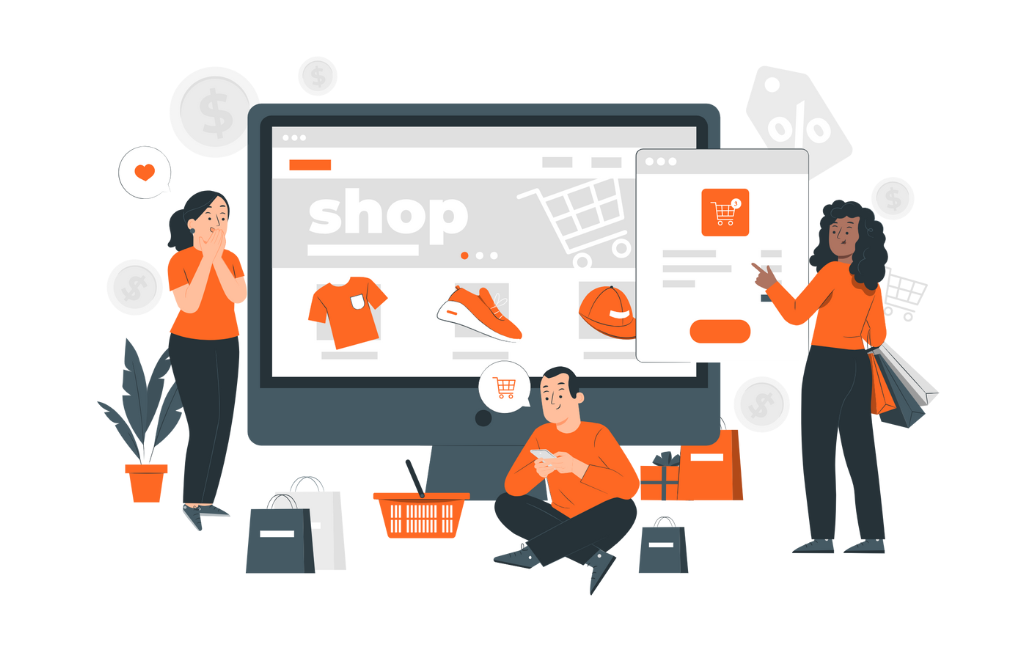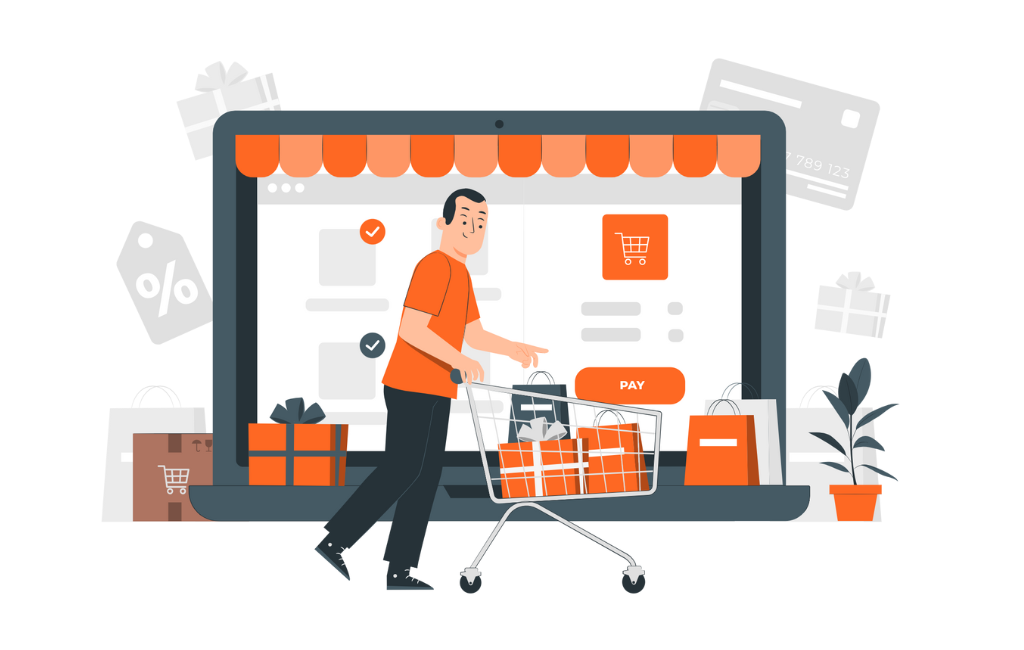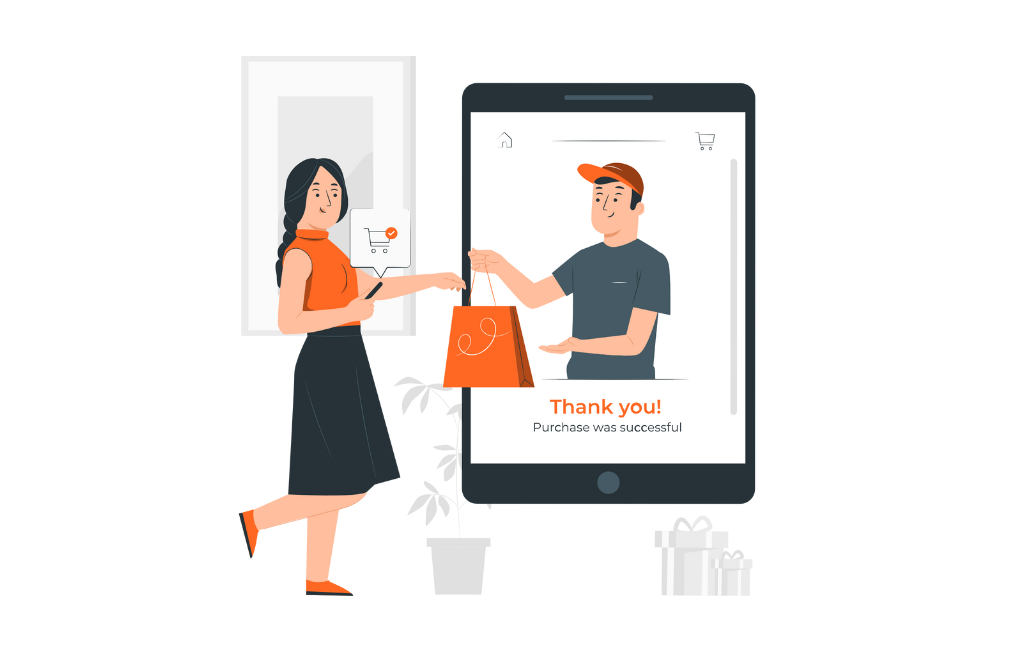Do you know that currently there are over 4.4 million stores on Shopify? When it comes to opening an online store, Shopify is the go-to platform for businesses. With advanced features and functionalities, it caters to the evolving demands of eCommerce.
As the industry continues to grow, Shopify development trends are also evolving to help businesses enhance the user experience. To succeed on this rapidly growing platform, businesses must stay updated on these trends and implement them in their online stores.
However, the implementation could be complex and require technical expertise. So if you don’t have in-house resources, hiring dedicated Shopify developers could be a wise decision. So, without wasting any time, let’s dive in and explore these trends and understand how your business can leverage them.
Table of Contents
Why Choose Shopify for Developing an eCommerce Store?
In 2022, Shopify-supported businesses generated over $400 billion in sales. This represents a significant portion of the worldwide eCommerce market, estimated to be worth over $5.9 trillion in 2023.
Businesses built on Shopify are well-positioned to capitalize on the growth of the global eCommerce industry. The platform offers a wide variety of features and tools, making it easy for businesses to set up and run an online store, including:
- A user-friendly interface that requires no coding knowledge
- 100+ free and premium themes/templates that can be customized to suit your brand
- Integrated payment processing and shipping
- Supports localized storefronts and currencies for global reach
- An intuitive analytics dashboard to track your sales and performance
- Supports over 1400+ apps to personalize your business operations
- Self-hosted SaaS software with no additional hosting and maintenance requirements
- Offers 24×7 support assistance via email, live chat, and phone
Why Is It Important to Stay Updated on Shopify Development Trends?
With so many online stores and brands competing in the market, how can you make a difference? It is possible only by staying updated with the latest technological advancements and features. For business owners already using or planning to migrate to Shopify, knowing its emerging development trends is crucial for the following reasons:
To provide a better shopping experience
When shopping online, customers expect a certain level of convenience and personalized experience. By focusing on Shopify development trends related to user experience and implementing them in your eStore, you can meet their expectations and enhance engagement.
To gain a competitive advantage
By staying updated on emerging Shopify development trends, businesses can ensure their stores utilize the latest features and functionalities to stand out among competitors.
To enhance online presence, security, and sales
Shopify updates its platform frequently to enhance security and address vulnerabilities. It also offers various third-party integrations to streamline processes and improve eStore functionalities. By staying up-to-date with these developments, businesses can boost security, enhance user experience, and increase sales.
11 Emerging Shopify Development Trends That You Must Know and Adapt for eCommerce Success in 2023
After speaking with leading Shopify developers and partners, we identified some key development trends that have helped them grow their businesses online. Let’s see how these trends can help you.
Mobile-friendly Checkout Experience
As per the senior eCommerce consultant, Kurt Elster, while mCommerce is currently growing, the main obstacle with mobile shopping is the ease of checkout. To enhance the checkout experience and conversion rate on mobile devices, businesses can leverage two new features of Shopify released in 2022, which are:
- Checkout UI Extensions for Shopify Plus users that allow developers to build and install custom functionality at defined points in the checkout process like shipping, payment, order summary, etc. This helps to customize and simplify the checkout experience on mobile devices.
- Shopify Functions for Non-Plus users that let developers customize the backend part for streamlining the discount and checkout logic.
Using Pre-built Themes
To help businesses save development time and resources, Shopify has released Online Store 2.0, allowing developers to easily customize the pre-built themes instead of developing them from scratch. Utilizing it, online sellers can seamlessly build and maintain themes and theme apps with more flexibility.
Voice Search
As users prefer voice search over text search for shopping, it is crucial for you to integrate this feature in your Shopify store to enhance customer experience.
You can use voice-enabled search tools, like Phebi in Shopify, to add this functionality to your online store. It is available for desktop browsers, iOS, Windows, and Android devices. The tool scans your eCommerce website to create a custom audio and text database. This database is then integrated with Shopify’s inventory system, enabling users to find the desired products through a simple voice search.
AR and VR
Augmented and virtual reality (AR/VR) are revolutionizing online shopping by providing users with a realistic product experience. They can be utilized to offer 3D visualizations, product demos, and virtual try-ons.
According to recent research, approximately 40% of users are willing to pay a higher price for a product if they can utilize AR technology to test it. That’s why popular brands like Ray-Ban, Gucci, Ikea, Nike, and Lenskart are utilizing AR and VR to enhance the shopping experience for customers. Shopify also allows merchants to enhance AR and VR functionality in their stores. Businesses can hire Shopify developers with the required expertise to integrate these features in their stores to boost the chances of conversion.
Chatbots and Virtual Customer Support
Chatbots and virtual support are crucial for eCommerce businesses seeking to offer prompt and 24×7 assistance to their clients. Leveraging artificial intelligence (AI) and natural language processing (NLP) technologies, chatbots can understand user queries and provide efficient solutions for them. They can also utilize past conversation data to identify common queries and apply Machine Learning (ML) to improve their responses for the future.
Shopify supports various third-party integrations like Zendesk, Zowie, Deeponverse, etc., to access chatbots and virtual customer support features. Apart from this, Shopify also has its app store offering a wide range of chatbot apps to integrate with eCommerce stores.
3D Product Visualization
Compared to physical stores, eCommerce experiences higher return rates, primarily because customers may receive items that differ from their online perception of the same. Integrating 3D product visualization in online stores can solve this problem and effectively decrease return rates. It gives users a 360-degree view of products for a better understanding of patterns and other intricate details.
The 3D product visualizations created for the Shopify store must meet certain standards to avoid getting rejected owing to guideline violations or inaccurate representation. It would be wise for merchants to hire a Shopify developer skilled in developing 3D models according to the platform’s guidelines.
Social Commerce
Social commerce allows eCommerce businesses to reach new audiences through Facebook, Instagram, etc., for increased conversions. It offers a convenient and interactive shopping experience, allowing users to browse, shop, and complete purchases without leaving social media apps. As the global value of social commerce is projected to reach approximately $2.9 trillion by 2026, eCommerce businesses must leverage this trend.
Like other eCommerce platforms, Shopify also offers seamless & free integration with Facebook and Instagram to automatically sync product catalogs on these networking sites for promotions. Additionally, you can also utilize Shopify’s Linkpop to create a shoppable landing page that customers can access through these apps to browse and buy your products.
Headless Commerce
Despite being a relatively new concept, Headless commerce is gaining popularity as it offers greater flexibility and customization to businesses for scalability. It separates the client-side and server-side of an online store so changes made to the frontend won’t affect the functionality of the backend. B2B and B2C brands are leveraging this trend to improve their page load times and boost overall performance.
Shopify supports Headless commerce integration through its Storefront API. If you don’t have in-house developers, you can hire Shopify programmers to develop a frontend of your choice and connect it with Shopify’s backend for customizing your eStore.
Micro-influencer Marketing
Instead of investing a hefty amount of the marketing budget in big influencers, businesses are now focusing on micro-influencer marketing to reach a diverse audience. This trend is popular among Shopify merchants, enabling them to partner with relevant influencers who have a smaller yet highly-engaged and relevant audience.
Integration of micro-influencer marketing with the Shopify store is now simple with Shopify Collabs App. It allows brands to find and manage niche-specific influencers for their businesses. Apart from this, the platform also allows you to create custom landing pages and UTM codes to promote and track your influencer marketing campaigns for brand awareness and sales.
Subscription-based eCommerce
If you offer subscription-based products or services, you must include this trend in your Shopify development process. The platform provides in-built subscription management tools for merchants to help them create and manage subscriptions. You can integrate Shopify Subscription App with your store via API and start creating catalogs with subscription-based products. You can manage all your subscriptions via the Admin portal.
Apart from the in-built tool, Shopify also supports third-party subscription management apps for advanced features such as cross-selling, upselling, subscription box management, and more. By integrating tools like RecurrinGo and Appstle Subscriptions on the Shopify store, you can increase your customer loyalty and generate recurring revenue.
Leveraging Metadata Fields
Shopify’s metadata fields enable merchants to include extra information, like size guides or product pages. The information added in these fields helps merchants offer more personalized options. Customers can access this additional information directly on the platform.
As a business, if you are not already leveraging the metadata fields, you should start now to optimize customers’ shopping experience. If you lack the technical expertise to do so, hire Shopify developers who can create custom fields and link them to your store.
FAQs
How to stay updated about Shopify development trends?
There are several ways to stay updated about the latest Shopify development trends, such as:
- Actively participating in Shopify forums
- Attending official webinars and events of Shopify
- Following Shopify experts and influencers on social media
- Subscribing to relevant industry newsletters and blogs covering emerging Shopify development trends and tools
What are the key factors to consider when choosing Shopify apps for my store?
To choose the relevant Shopify apps for your store, here are some critical criteria to consider:
- User reviews
- App’s functionality
- Compatibility with your theme
- Customer support and pricing
Always look for apps that enhance your store’s performance, marketing, SEO, and customer experience.
Are there any new Shopify features or updates that I should be aware of?
Shopify keeps releasing numerous new features and updates to help merchants enhance the functionalities of their eStores. Some recent features released by Shopify are:
- Augmented Reality Experience: To offer a personalized shopping experience
- Shop Pay: For lead generation through emails
- POS UI Extensions: To offer new point-of-sale customizations with improved page loading time
- Online Store 2.0: To simplify building and customizing themes and theme apps
- Selling Plan APIs: To provide purchase options for pre-orders so you can try them before buying
How to personalize the shopping experience for customers using Shopify?
To personalize the shopping experience for your customers, it is crucial to first analyze their behavior on your site. Segment your customers based on their needs, shopping habits, and other details. Based on this data, you can recommend related products, send personalized emails, and offer custom discounts or promotions to your customers to gain their loyalty.
What is the strategy to grow on Shopify in 2023?
The success strategy to grow on Shopify in 2023 revolves around building a better customer experience and following emerging Shopify development trends. It is crucial to understand your audience’s behavior and integrate the latest technologies like AR, VR, AI, and ML to personalize the shopping experience for them. Keep your website mobile-optimized and easy to load & navigate for seamless checkout and shopping experiences.
Key Takeaway
These are some useful Shopify development trends that merchants can follow to boost their conversions online. Now, it is time for you to review your Shopify store and implement these trends to offer an enhanced shopping experience to your users. As the eCommerce landscape is constantly changing, these trends will continue to evolve in the future. If you find it hard to keep up with these changes, it may be beneficial to consider hiring dedicated Shopify developers who can manage these updates on your behalf.
AUTHOR BIO
Amelia Swank is a Sr. web and app developer, currently working with SunTec India, a well-known software development company. She is passionate about technology and has written several articles to spread her knowledge of web and application development. Amelia is always keeping an eye out for the newest trends, inventions, and changes in the IT industry, and is eager to share her insights with those who are interested in the field
Don't forget, sharing is caring! :)







